Ask the average non-Italian to give you a rundown on Italian cuisine and chances are it will sound like this:
“Spaghetti…with meatballs, Fettuccini Alfredo, lasagna for sure…and pepperoni pizza…!”
We’ll spare the culinary critique of how…shall we say… deficient” this list can be. Thankfully, Italy and her glorious regional specialties offer so much more to excite the palate and delight the stomach.
There is one region, however, that is perchance lacking credit where credit is due…Piedmont/Piemonte. A northernmost province, Piedmont sits mirthfully tucked in the north-west cuff of the boot, sharing the largest portion of its border with France. The capital city of Turin is potentially the best-known in the region, her accolades to include Fiat and The Shroud. However, there are many gastronomic wonders to be found throughout the smorgasbord of culinary richness that is the Piemontese palate.
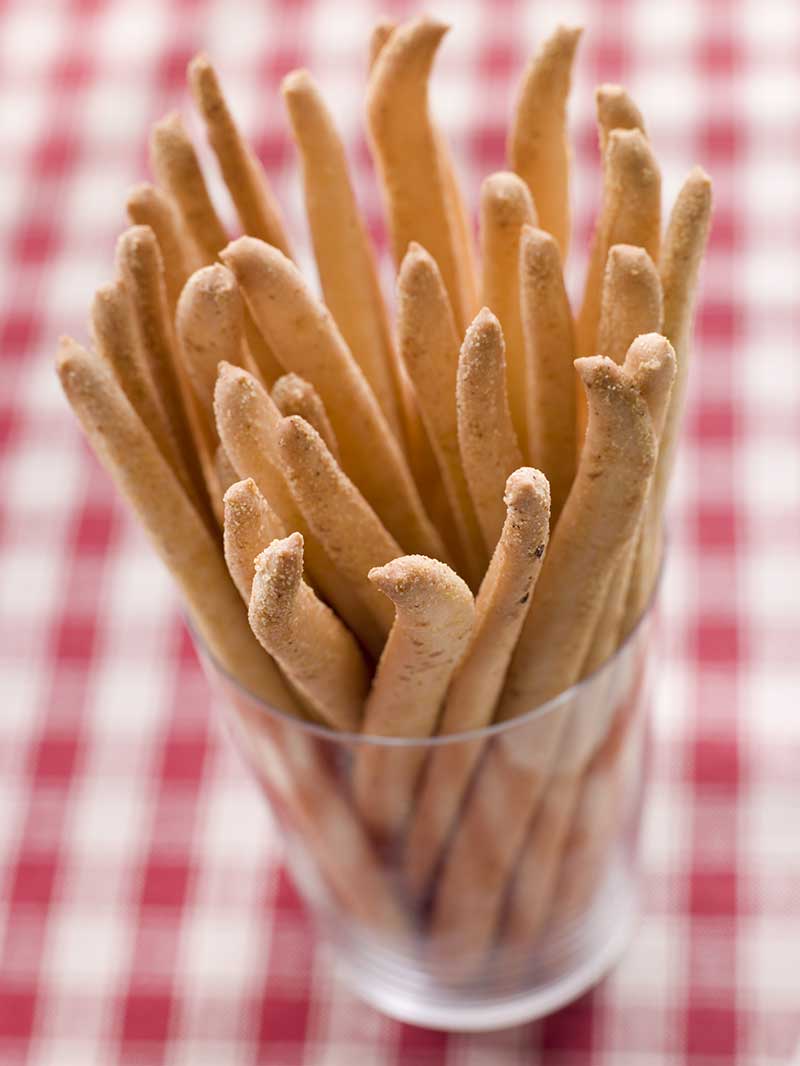
If credentials are needed before we embark on this savory run-down, Piemonte has them. The fact that Nutella, the chocolatey hazelnut wonder-child of the spreadables world, is the creation of a native Piemontese is suffice for many, but it goes much deeper than that! The Slow Food Movement, recognized world-wide now, began in 1986, the brainchild of Carlo Petrini of Bra, Piedmont. A professional gourmet, Petrini had the foresight to recognize the availability of locally grown, clean food and wine was in jeopardy at the hands of corporate chains. At-risk were the quaint, locally owned trattorias and the clean, seasonal food they provided…as well as the heritage that went with them. The rest is history — and a successful one at that. Notable, too, are those yummy-crunchy breadsticks we all love known as grissini – the invention of a bread maker in Torino – and of course, the well-known and highly revered white truffles of Alba.
Its culinary vetting in place, how best to narrow a vicarious taste test of Piemontese eatables to something meaningful yet doable? Perhaps the best way is to imagine ourselves as guests at a family table invitingly set for a full course meal. The laughter and chat melt into “oooh’s and ahhh’s” as the antipasti are presented. Sure hope you’re hungry!
ANTIPASTI
One must stir the appetite for all that is to come, and a Piemontese-style stirring is more like a whirling dervish of possibilities. The options are vast. Nevertheless, most menus provide a selection manageable enough to fall one notch below impossible.

Sharing a border with France is like sharing a dorm room with your foreign best friend — some of the cool stuff is going to rub off on you. “La cuisine française” is definitely an influence when it comes to Piedmont’s cheese offerings. Luxurious, small production cheese rules the day. The foothills of the Alps provide rich pasture, and many a classic originates here. Creamy, French-inspired Robiola provides just the right tang atop a toasty bruschetta…or perhaps reach for the heady, crumbly Castelmagno, its bread-like appearance initially confusing. Don’t forget to drizzle Piedmont’s bitter chestnut honey over a hunk to create the perfect trifecta of savory, pungent, sweet.
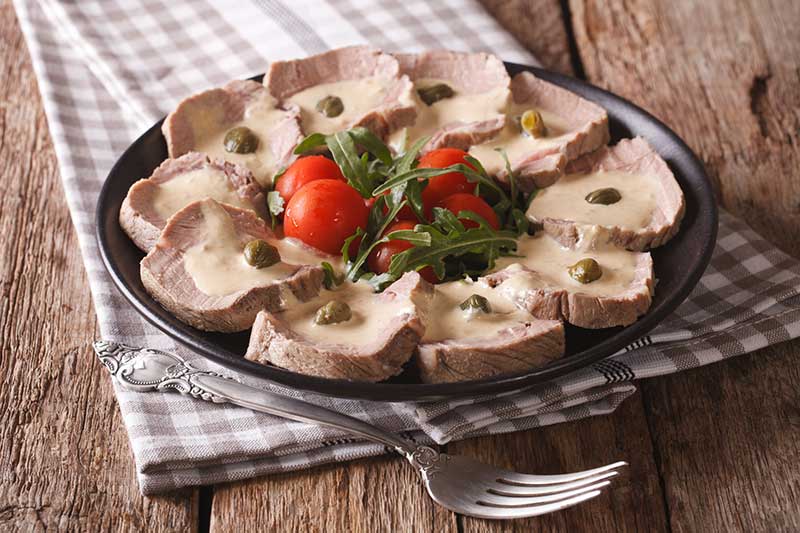
Piedmont’s antipasti menus include the regional array of gossamer-thin sliced meats, but when a local thinks “carne” for a starter, the possibilities traverse the boundaries of traditional sliced salume. Perhaps you’re in the mood for Vitello tonnato, papery-thin sliced veal paired with tuna and caper infused mayonnaise.
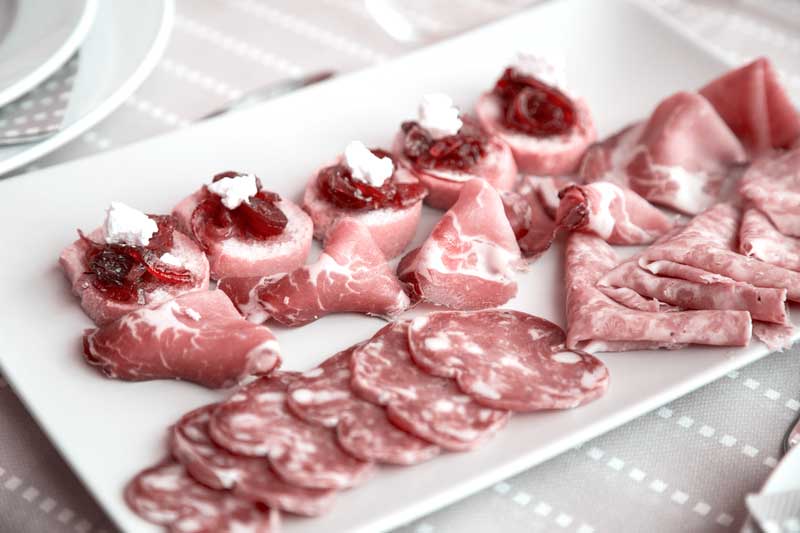
Or possibly the stout combination of organ meats and mushrooms united by marsala, vinegar, and garlic known as Finanaziera chased by a nibble of Piemontese salume created from a mash-up of pork, goose, beef, and even trout. Raw mixture of veal meat served with extra virgin olive oil, and a dash of salt and pepper – carne cruda — is also a common appetite whetter at the table.
PRIMI

Your fully primed and ready palate awaits an introduction to Piedmont’s most famous variety of pasta: tajarin. The northern cousin of tagliatelle, these thin, saffron-colored ribbons stand apart from any other Italian pasta due to their high egg content. In fact, only the yolks are used. I think we can vouch for a Piemontese preference for rich foods! The hearty noodles stand up well to a bath of butter and sage or swimming about in a scrumptious meat sauce.
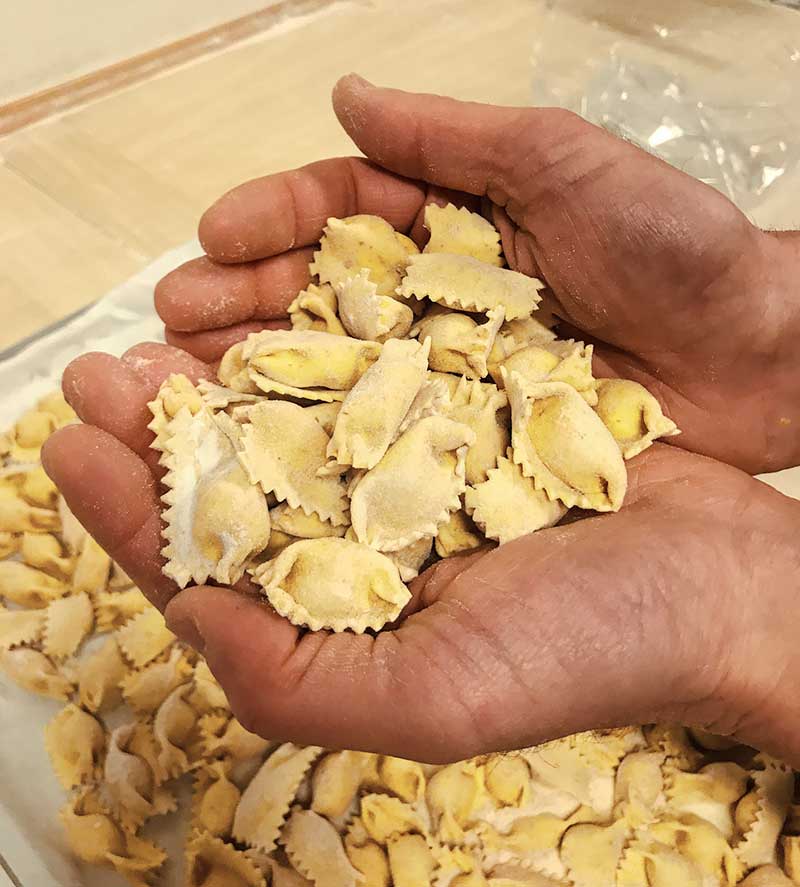
If you’d prefer to be fooled into thinking you’re eating lighter, ask for Agnolotti al plin. These delicately petite ravioli filled with meat, vegetables or cheese are handmade by fare il plin — pinching out pockets from two sheets of golden pasta. Douse with a delectable butter sauce…buonissimi! Come October, these and almost any other eatable product can be dusted in white truffle should your heart desire…and your pocketbook be able to handle it.
SECONDI
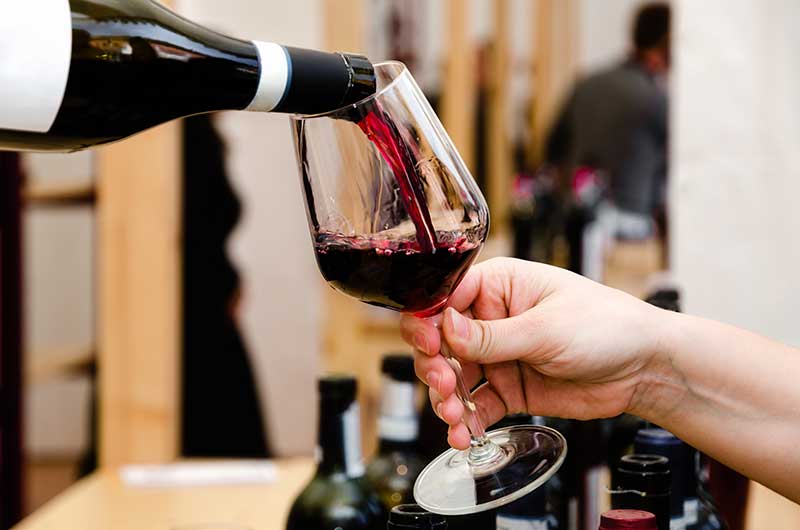
Gastronomic paradise continues into the main course. Perhaps the most memorable of dishes in my mind would be the melt-in-your-mouth, savory rich Brasato al Barolo/Barbaresco – veal simmered for eternity in Piedmont’s famous wines and delicately seasoned with juniper berries (a must). Ladle a healthy portion over steamy, creamy polenta and alas…meat-lover’s heaven.
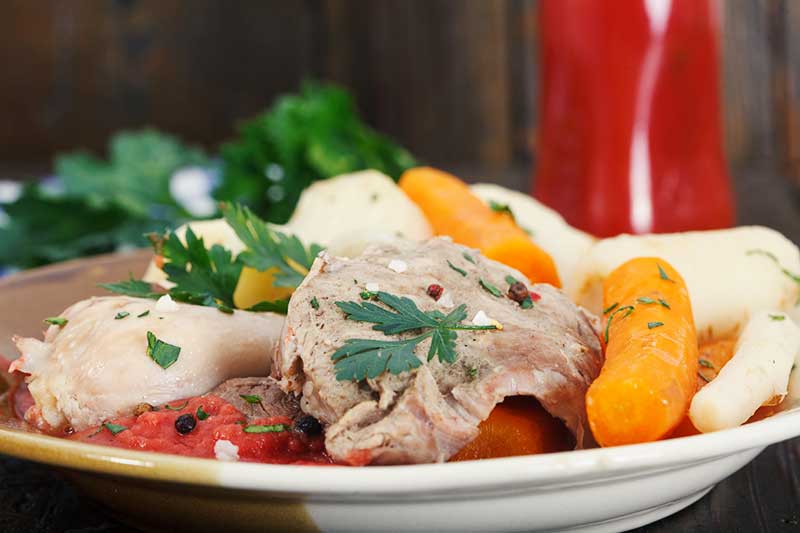
Coniglio, or rabbit, is often served this way, as well. Another celebrated secondo is Bollito misto – a combination of meats and vegetables boiled for hours to reach fork-ready tenderness. As if there’s no in-between, other popular meat dishes are served crudi, or raw. Why bother with “medium,” I suppose!
DOLCE
But what about contorni – the side dishes? Like taking your cousin to the prom, these seem to be enjoyed if you must, but not greatly missed if skipped – not only in Piedmont, but throughout Italy. Nothing to see…move along.

But oh yes…the dolce…the sweet end to a fabulous dinner Piedmont style! Pleasingly so, the Piemontese menu has found its way past the usual torta or gelato or tiramisù. Meet Bonèt. This velvety chocolate and hazelnut custard is baked to perfection atop a caramel foundation, then plated bottom’s up with a dollop of fresh whipped cream. It will live on in your dreams.
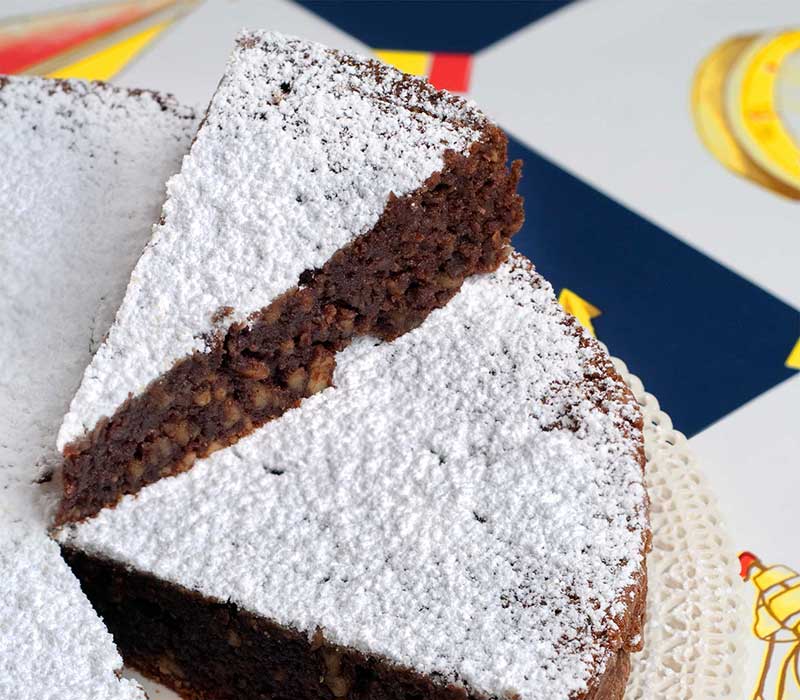
Zabaione is another crowd-pleasing custard concocted with Marsala wine and a decadent number of egg yolks. If those fall short in the richness department, stick your fork into a slice of Torta Gianduia, a cake made from ground nuts (no flour), chocolate, butter, and definitely a few tablespoons of magic.
Italy is full, over-flowingly so, with what I consider to be the world’s grandest food and wine. Push complacency aside if thinking you’ve discovered the best in any given region. Piedmont awaits.
Chiedete a un non italiano medio di farvi un riassunto della cucina italiana e probabilmente vi dirà così: “Spaghetti… con polpette, Fettuccine Alfredo, lasagne di sicuro… e pizza al salame piccante…”!
Risparmieremo la critica culinaria di quanto… diciamo così… “carente” possa essere questa lista. Per fortuna l’Italia e le sue gloriose specialità regionali offrono molto di più per emozionare il palato e deliziare lo stomaco.
C’è una regione, però, che forse non ha molto credito in materia e che invece lo meriterebbe… il Piemonte. Fra le regioni più a nord, il Piemonte sta beato nel lato nord-occidentale dello Stivale, condividendo gran parte dei suoi confini con la Francia. Il capoluogo è Torino ed è credo il più conosciuto della regione, con i suoi motivi di vanto che includono la Fiat e la Sindone. Tuttavia, sono molte le meraviglie gastronomiche che si possono trovare nel ricco ventaglio culinario che è il gusto piemontese.
Se sono necessarie credenziali prima di imbarcarsi in questo tour del sapore, il Piemonte le ha. Se il fatto che la Nutella, il cioccolato alla nutella che è una vera delizia nel mondo degli spalmabili, sia la creazione di un piemontese doc è sufficiente per molti, si può andare molto più in là! Il Movimento Slow Food, riconosciuto ormai a livello mondiale, è nato nel 1986, da un’idea di Carlo Petrini di Bra, Piemonte. Gastronomo professionista, Petrini ha avuto la lungimiranza di riconoscere che la disponibilità di cibo sano e vino locale, era in pericolo a causa delle catene aziendali. A rischio erano le caratteristiche trattorie locali e il cibo fresco e di stagione che fornivano… oltre al patrimonio che li accompagnava. Il resto è storia, e anche un successo. Degni di nota sono anche i golosi e croccanti grissini, che tutti amiamo, invenzione di un panificatore torinese, e naturalmente il noto e venerato tartufo bianco d’Alba.
Esaminando l’offerta culinaria, come riassumere questa tipicità piemontese in qualcosa di significativo eppure evidente? Forse il modo migliore è quello di immaginarci ospiti a una tavola familiare apparecchiata in modo invitante per un pasto completo. Le risate e le chiacchiere si fondono con “oooh e ahhh” mentre vengono presentati gli antipasti. Spero che abbiate fame!
ANTIPASTI
Bisogna risvegliare l’appetito per tutto ciò che verrà, e un giro di antipasti in stile piemontese è più che altro un vorticoso valzer di possibilità. Le possibilità sono tante. Tuttavia, la maggior parte dei menù offre una selezione abbastanza gestibile per stare una tacca sotto all’insostenibile.
Condividere un confine con la Francia è come dividere una stanza del dormitorio con il tuo migliore amico straniero: alcune delle sue cose migliori finiranno da te. “La cuisine française” è sicuramente un’influenza per quanto riguarda l’offerta di formaggi piemontesi. Dominano i formaggi ricchi e di piccola produzione. Le Prealpi offrono un abbondante pascolo, e molti classici hanno qui la loro origine. La Robiola, cremosa e di ispirazione francese, offre il giusto gusto in cima ad una bruschetta tostata… o forse raggiunge livelli inebrianti sul friabile Castelmagno, il cui aspetto da pane inizialmente confonde. Non dimenticate di mettere del miele amaro di castagno piemontese su un lato per creare la perfetta tripletta di gustoso, pungente e dolce.
I menù degli antipasti piemontesi comprendono una gamma regionale di carni affettate molto sottili, ma quando un locale pensa alla “carne” come antipasto, le possibilità oltrepassano i confini del tradizionale salume a fette. Forse siete in vena di Vitello tonnato, la carne di vitello a fettine sottili come la carta, abbinata a tonno e maionese in infusione di capperi. O forse preferite la corpulenta combinazione di frattaglie e funghi uniti da marsala, aceto e aglio detta Finanziera, seguita da un boccone di salume piemontese ricavato da un purè di maiale, da oca, manzo e persino trota. Un crudo misto di carne di vitello servito con olio extravergine d’oliva e un pizzico di sale e pepe – la carne cruda – è anche un comune antipasto a tavola.
PRIMI
Il vostro palato, pronto e preparato, aspetta ora la varietà di pasta più famosa del Piemonte: i Tajarin. Cugini nordici delle tagliatelle, questi sottili nastri color zafferano si distinguono da ogni altra pasta italiana per l’alto contenuto di uova. Infatti, vengono utilizzati solo i tuorli. Penso si possa dire che la cucina piemontese ha un debole per i cibi ricchi! Le sostanziose tagliatelle resistono bene a un bagno di burro e salvia o a una nuotata in un delizioso sugo di carne. Se preferite essere ingannati pensando di mangiare più leggero, chiedete gli Agnolotti al plin. Questi ravioli delicatamente minuscoli, ripieni di carne, verdure o formaggio, sono fatti a mano: fare il plin cioè pizzicare gli angoli di due fogli di pasta dorata. Da condire con una deliziosa salsa al burro… buonissimi! A ottobre, questi e quasi tutti gli altri prodotti possono essere spolverati di tartufo bianco, se il vostro cuore lo desidera… e il vostro portafogli ve lo permette.
SECONDI
Il paradiso gastronomico continua nel piatto principale. Forse il piatto più memorabile nella mia mente è il Brasato al Barolo/Barbaresco, ricco di gusto e sapore, che si scioglie in bocca. E’ vitello cotto a lungo nei famosi vini piemontesi e delicatamente condito con bacche di ginepro (un must). Aggiungerci sopra una sana porzione di polenta fumante e cremosa e ah… ecco il paradiso degli amanti della carne. Anche il coniglio, viene spesso servito in questo modo. Un altro famoso secondo è il Bollito misto, una combinazione di carni e verdure bollite per ore fino a raggiungere la tenerezza al taglio della forchetta. Come se non ci fosse una via di mezzo, altri popolari piatti di carne vengono serviti crudi. Perché mai preoccuparsi della “via di mezzo”, suppongo!
DOLCE
Che dire dei contorni? Come portare vostro cugino al ballo di fine anno. Sembra cioè che questi siano da provare se proprio si deve, nel senso che non si perde poi granché se si saltano – non solo in Piemonte, ma in tutta Italia. Niente di che… andate avanti.
Ma oh sì… il dolce… il dolce finale di una favolosa cena alla piemontese! Piacevolmente, il menù piemontese ha trovato la sua strada oltre la solita torta o il gelato o il tiramisù. Vi presento il Bonèt. Questa crema vellutata al cioccolato e nocciola è cotta alla perfezione su un fondo al caramello, poi sopra si completa con un pizzico di panna fresca montata. Continuerà a vivere nei vostri sogni. Zabaione è un’altra crema pasticcera che piace a tutti, preparata con vino Marsala e una quantità di tuorli d’uovo. Se tutto ciò non basta nel reparto ricchezza, infilate la forchetta in una fetta di Torta Gianduia, una torta a base di noci macinate (senza farina), cioccolato, burro e sicuramente qualche cucchiaio di magia.
L’Italia è piena, traboccante, di quello che considero il cibo e il vino migliore del mondo. Mettete da parte l’autocompiacimento se pensate di aver scoperto il meglio in una data regione. Il Piemonte vi aspetta.





































